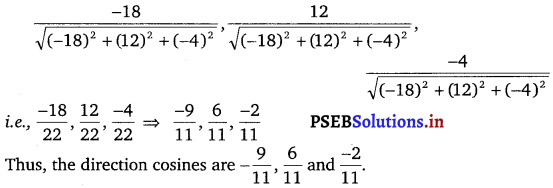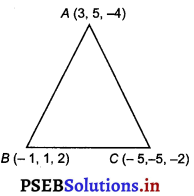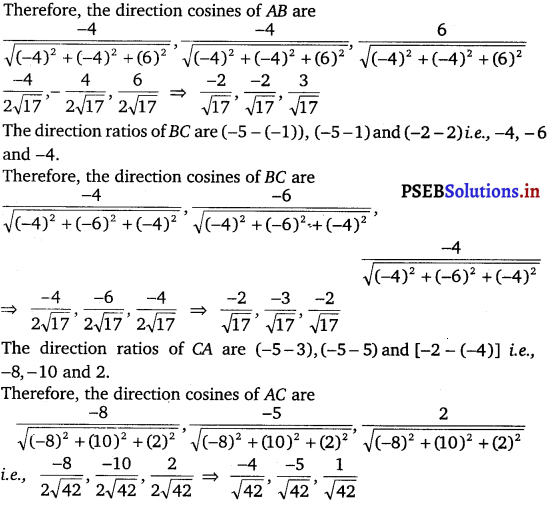This PSEB 8th Class Social Science Notes Chapter 2 Natural Resources will help you in revision during exams.
Natural Resources PSEB 8th Class SST Notes
→ Conservation: It means using the available resources carefully.
→ Land: The most important resource.
→ Land may be used for agriculture Construction of Roads, Industries, etc.
→ Soil is the uppermost layer of the earth’s crust.
→ Soil Erosion: The removal of soil, especially topsoil, either naturally or as a result of human activity.
![]()
→ Land Use: The use of land for different purposes like agriculture, roads, etc.
→ Terrace Farming: The growing of crops on terraces or steps that have been constructed on hillsides.
→ Topography: A detailed account of the features of a tract of country.
→ Strip Cropping: The growing of narrow strips of Cultivated lands, along the contour lines.
→ Shelterbelts: The planting of rows of trees to check the wind movement, to protect the soil.
→ Deforestation: Cutting down trees.
→ Pollution: Contamination of natural resources.
→ Weathering: The breaking up and decay of exposed rocks by temperature changes, plants, animals, etc.
→ Natural vegetation and wildlife are found in the Biosphere.
→ National Park: A natural area designated to protect the ecological integrity of one or more ecosystems for present and future generations.
→ Biosphere resources: Series of protected areas linked through a global network intended to demonstrate the relationship between conservation and development.
→ The land covers about 29 percent of the total surface area of the earth.
![]()
→ Land in India actually under cultivation is about 46 percent of the land.
→ The total land resources in our country are fixed.
→ The importance of soils lies in their fertility and capacity to produce crops.
→ Alluvial soils are mostly found in river valleys and floodplains.
→ About 71 percent of the total surface area of the earth is underwater.
→ Wells, tanks, and canals are different sources of irrigation in our country.
→ Natural vegetation can be broadly classified into forests, grasses, and shrubs.
→ Wildlife refers to plants, animals, birds, and other organisms, which live in their natural habitats.
→ Many countries have taken steps to develop ‘biosphere resources’ to protect wildlife.
→ Ninety percent of the world population occupies only thirty percent of the land area.
→ The remaining seventy percent of the land is either sparsely populated or uninhabited.
→ A dripping tap wastes 1200 liters in a year.
→ Soil formation is a very Slow Process. It takes hundreds of years to make just one centimetre of Soil.
→ The thin layer of grainy substance covering the surface of the earth is called soil.
![]()
→ In India, soils are of six types.
→ Water can neither be added nor subtracted from the earth.
→ An average urban Indian uses about 135 litres of water every day.
प्राकृतिक संसाधन PSEB 8th Class SST Notes
→ प्राकृतिक संसाधन – प्रकृति द्वारा प्रदान किये गये उपहारों को प्राकृतिक संसाधन कहा जाता है। ये संसाधन मानव को समृद्धि तथा विकास का आधार हैं।
→ मुख्य प्राकृतिक संसाधन – मिट्टी, भूमि, जल, प्राकृतिक वनस्पति, जंगली जीव तथा खनिज और ऊर्जा संसाधन मुख्य प्राकृतिक संसाधन हैं।
→ भूमि संसाधन – भूमि संसाधन कृषि और मानव क्रियाओं के लिए बहुत ही महत्त्वपूर्ण हैं।
→ भारत में भूमि प्रयोग-
- वनों के अधीन भूमि
- कृषि अधीन भूमि
- कृषि के अतिरिक्त भूमि
- कृषि के लिए खाली छोड़ी हुई भूमि
- कृषि योग्य परन्तु व्यर्थ भूमि।
- चरागाह तथा जंगलात भूमि।
→ मिट्टी संसाधन – मिट्टी फ़सलें और पौधे पैदा करने के लिए आवश्यक संसाधन हैं। इसलिए मिट्टी संसाधन में आने वाली समस्याओं का निदान तथा मिट्टी की सम्भाल बहुत ही आवश्यक है।
→ मिट्टी के प्रकार – जलौढ़ मिट्टी, काली मिट्टी, लाल मिट्टी, मरुस्थलीय मिट्टी, लेटराइट मिट्टी तथा वनीय एवं पर्वतीय मिट्टी।
→ जल संसाधन – जल एक बहुमूल्य संसाधन है। पीने तथा सिंचाई के अतिरिक्त यह धुलाई, खाना पकाना जैसे कई अन्य कार्यों में भी प्रयोग होता है।
→ जल के स्त्रोत – वर्षा, नहरें, नदियां, तालाब तथा भूमिगत जल।
→ प्राकृतिक वनस्पति – यह संसाधन जलवायु, मिट्टी के प्रकार, स्थान तथा समुद्र तल से ऊंचाई पर निर्भर करती है।
→ वनों के प्रकार – सदाबहार, पतझड़ी, मरुस्थलीय, पर्वतीय और डैल्टाई वनस्पति।
→ जंगली जीव – इन्हें बचाने के लिए सरकार ने राष्ट्रीय-पार्क तथा जीव सैंक्चुरियां स्थापित की हैं। हमारा भी कर्तव्य है कि हम इनकी रक्षा करें।
ਕੁਦਰਤੀ ਸਾਧਨ PSEB 8th Class SST Notes
→ ਕੁਦਰਤੀ ਸਾਧਨ-ਕੁਦਰਤ ਦੁਆਰਾ ਪ੍ਰਦਾਨ ਕੀਤੇ ਗਏ ਤੋਹਫ਼ਿਆਂ ਨੂੰ ਕੁਦਰਤੀ ਸਾਧਨ ਕਿਹਾ ਜਾਂਦਾ ਹੈ । ਇਹ ਸਾਧਨ ਮਨੁੱਖ ਦੀ ਖ਼ੁਸ਼ਹਾਲੀ ਅਤੇ ਵਿਕਾਸ ਦਾ ਆਧਾਰ ਹਨ ।
→ ਮੁੱਖ ਕੁਦਰਤੀ ਸਾਧਨ-ਮਿੱਟੀ, ਭੂਮੀ, ਪਾਣੀ, ਕੁਦਰਤੀ ਬਨਸਪਤੀ, ਜੰਗਲੀ ਜੀਵ, ਖਣਿਜ ਅਤੇ ਊਰਜਾ ਸਾਧਨ ਮੁੱਖ ਕੁਦਰਤੀ ਸਾਧਨ ਹਨ ।
→ ਭੂਮੀ ਸਾਧਨ-ਭੂਮੀ ਸਾਧਨ ਖੇਤੀ ਅਤੇ ਮਨੁੱਖੀ ਕ੍ਰਿਆਵਾਂ ਲਈ ਬਹੁਤ ਮਹੱਤਵਪੂਰਨ ਹਨ ।
→ ਭਾਰਤ ਵਿਚ ਭੂਮੀ यूजेग-
- ਜੰਗਲਾਂ ਦੇ ਅਧੀਨ ਭੂਮੀ
- ਖੇਤੀ ਅਧੀਨ ਭੂਮੀ
- ਖੇਤੀ ਤੋਂ ਇਲਾਵਾ ਭੂਮੀ
- ਖੇਤੀ ਲਈ ਖਾਲੀ ਛੱਡੀ ਹੋਈ ਭੂਮੀ
- ਖੇਤੀ ਯੋਗ ਪਰ ਵਿਅਰਥ ਭੂਮੀ
- ਚਰਾਗਾਹਾਂ ਅਤੇ ਦਰੱਖ਼ਤਾਂ ਅਧੀਨ ਭੂਮੀ।
→ ਮਿੱਟੀ ਸਾਧਨ-ਮਿੱਟੀ ਫ਼ਸਲ ਅਤੇ ਪੌਦੇ ਪੈਦਾ ਕਰਨ ਲਈ ਜ਼ਰੂਰੀ ਸਾਧਨ ਹੈ । ਇਸ ਲਈ ਮਿੱਟੀ ਸਾਧਨ ਵਿਚ ਆਉਣ ਵਾਲੀਆਂ ਸਮੱਸਿਆਵਾਂ ਦਾ ਹੱਲ ਕਰਨਾ ਅਤੇ ਮਿੱਟੀ ਦੀ ਸੰਭਾਲ ਬਹੁਤ ਹੀ ਜ਼ਰੂਰੀ ਹੈ ।
→ ਮਿੱਟੀ ਦੀਆਂ ਕਿਸਮਾਂ-ਜਲੌੜ ਮਿੱਟੀ, ਕਾਲੀ ਮਿੱਟੀ, ਲਾਲ ਮਿੱਟੀ, ਮਾਰੂਥਲੀ ਮਿੱਟੀ, ਲੈਟਰਾਈਟ ਟੀ, ਜੰਗਲੀ ਅਤੇ ਪਰਬਤੀ ਮਿੱਟੀ ।
→ ਜਲ (ਪਾਣੀ) ਸਾਧਨ-ਪਾਣੀ ਇਕ ਬਹੁਮੁੱਲਾ ਸਾਧਨ ਹੈ । ਪੀਣ ਅਤੇ ਸਿੰਜਾਈ ਤੋਂ ਇਲਾਵਾ ਇਹ ਧੁਆਈ, ਖਾਣਾ ਪਕਾਉਣਾ ਵਰਗੇ ਹੋਰ ਵੀ ਕਈ ਕੰਮਾਂ ਵਿਚ ਵਰਤਿਆ ਜਾਂਦਾ ਹੈ ।
→ ਪਾਣੀ ਦੇ ਸੋਮੇ-ਵਰਖਾ, ਨਹਿਰਾਂ, ਨਦੀਆਂ, ਤਲਾਬ ਅਤੇ ਜ਼ਮੀਨ ਹੇਠਲਾ ਪਾਣੀ ।
→ ਕੁਦਰਤੀ ਬਨਸਪਤੀ-ਇਹ ਸਾਧਨ ਜਲਵਾਯੂ, ਮਿੱਟੀ ਦੀਆਂ ਕਿਸਮਾਂ, ਸਥਾਨ ਅਤੇ ਸਮੁੰਦਰੀ ਤਲ ਤੋਂ ਉੱਚਾਈ ‘ਤੇ ਨਿਰਭਰ ਕਰਦੀ ਹੈ ।
→ ਜੰਗਲਾਂ ਦੀਆਂ ਕਿਸਮਾਂ-ਸਦਾਬਹਾਰ, ਪੱਤਝੜੀ, ਮਾਰੂਥਲੀ, ਪਰਬਤੀ ਅਤੇ ਡੈਲਟਾਈ ਬਨਸਪਤੀ ।
→ ਜੰਗਲੀ ਜੀਵ-ਇਨ੍ਹਾਂ ਨੂੰ ਬਚਾਉਣ ਲਈ ਸਰਕਾਰ ਨੇ ਰਾਸ਼ਟਰੀ ਪਾਰਕ ਅਤੇ ਜੀਵ ਸੈਂਕਚੂਰੀਆਂ ਸਥਾਪਿਤ ਕੀਤੀਆਂ ਹਨ ਸਾਡਾ ਵੀ ਫ਼ਰਜ਼ ਹੈ ਕਿ ਅਸੀਂ ਇਨ੍ਹਾਂ ਦੀ ਰੱਖਿਆ ਕਰੀਏ ।



